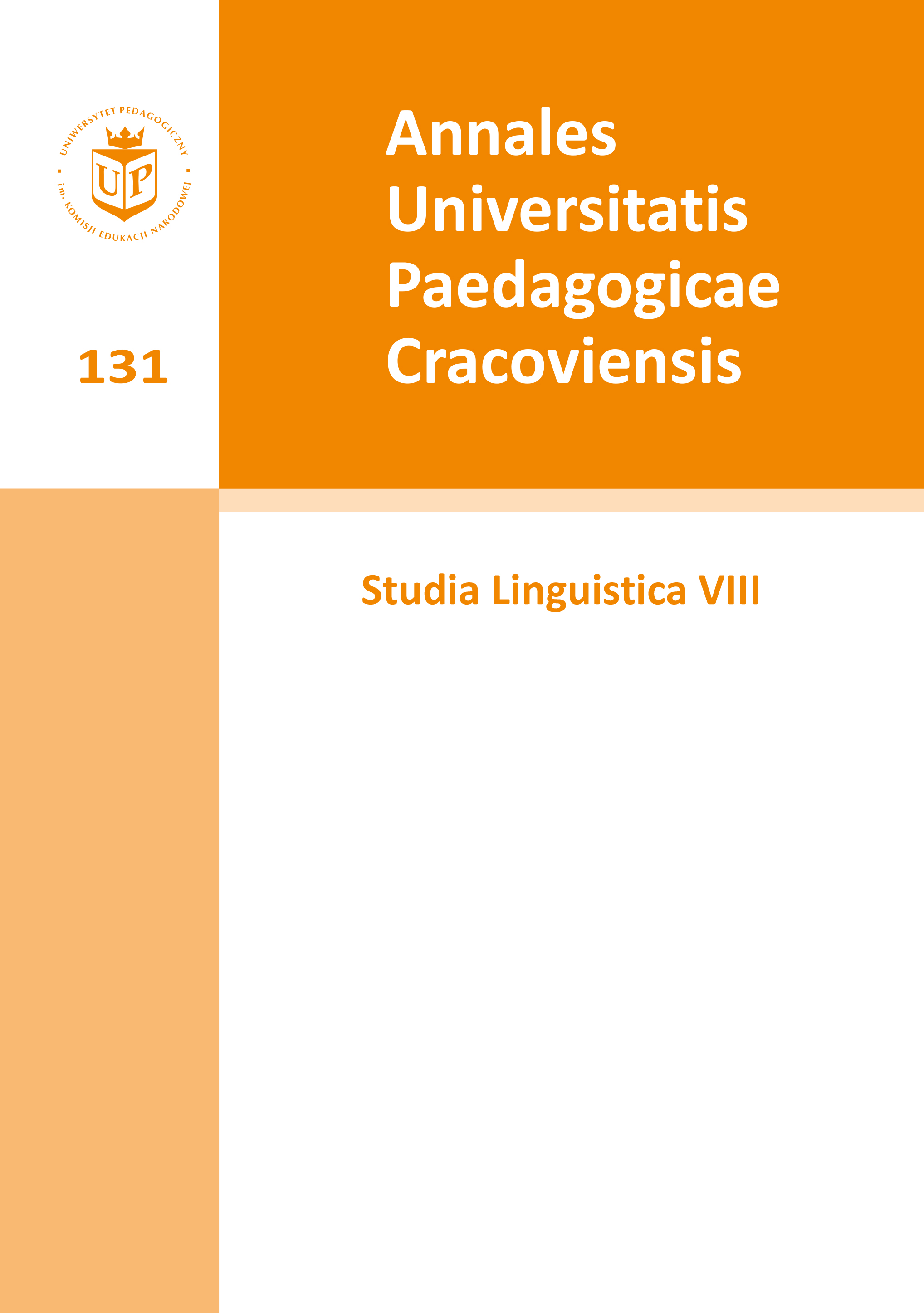Grubość i chudość w polszczyźnie
Main Article Content
Abstract
The article refers to the currently popular problem of “fighting with extra weight”. The paper presents various verbal and stylistic ways of naming thick and thin people used in today’s Polish language, especially in its colloquial (informal) form. The analysis is based on a collection of about 440 different terms used for describing thick and thin people as well as common words and phrases that form the word field of thickness and thinness. In addition to the basic synonyms and idioms which name these deficiencies in the physical appearance, the article shows, among others, names that connote the level of massiveness of the human body, verbs that refer to gaining and losing weight, words describing characteristic, visible features associated with obesity or leanness. It also distinguishes four groups of metaphorical expressions of corpulent and slim people, motivated by a variety of names designating respectively round or thin and narrow shape or appearance. The author also notes significant lexical-quantitative disproportion of vocabulary concerning thickness in relation to the vocabulary of the verbal field of thinness, suggesting that there is an asymmetry that could be the verbal evidence of “fighting with obesity.”
Downloads
Article Details
Author, submitting a text to the editorial board of the journal “Annales Universitatis Paedagogicae Cracoviensis. Studia Linguistica", certifies that the content of the article has not been published so far and that the work does not violate in any way the copyright or related rights of other person, as well as other rights of third parties, and that no one's rights to the work (or any part thereof) have been missed. After signing the contract, the property rights to the published materials are transferred to the Scientific Publisher of the University of the National Education Commission, Krakow.
“Annales Universitatis Paedagogicae Cracoviensis. Studia Linguistica” is an open access journal, and all its content is made available free of charge to users and institutions under the Creative Commons CC-BY-NC-ND 4.0 license (attribution, non-commercial use, no derivative works). Under this license, the authors agree that their work may be lawfully reused for any purpose, except for commercial purposes, without the prior consent of the author or publisher. Everyone can read, download, copy, print, distribute and process these works, provided that the author's marking and the original publication place are correct. Published texts may not be used to create derivative works (e.g. to translate and publish in another language without the consent of the publisher). This is in line with the BOAI (Budapest Open Access Initiative) definition. "Studia Linguistica" does not charge for submitting or processing articles.
References
Dąbrowska A., 1992, Eufemizmy mowy potocznej, [w:] Potoczność w języku i kulturze, red. J. Anusiewicz, F. Nieckula, Wrocław, s. 119–178 (Język a Kultura, t. 5).
Google Scholar
Dąbrowska A., 1994, Eufemizmy współczesnego języka polskiego, Wrocław.
Google Scholar
Historia ciała, 2011, t. 1: Od renesansu do oświecenia, red. G. Vigarello, Gdańsk.
Google Scholar
Kłosiewicz-Lepianka M., 2004, Profile pojęcia ciało w dzisiejszej prasie kobiecej, „Poradnik Językowy”, z. 7, s. 30–44.
Google Scholar
Kopaliński W., 1996, Słownik eponimów, czyli wyrazów odimiennych, Warszawa.
Google Scholar
Krawczyk A., 1991, Ciało człowieka w świetle frazeologii gwarowej, [w:] Podstawowe pojęcia i problemy, red. J. Anusiewicz, J. Bartmiński, Wrocław, s. 143–147 (Język a Kultura, t. 1).
Google Scholar
Peisert M., 2003, Sus domesticus – zwierzę, którego nazwy używać nie wypada, [w:] Opozycja homo – animal w języku i kulturze, red. A. Dąbrowska, Wrocław, s. 149–155 (Język a Kultura, t. 15).
Google Scholar
Peisert M., 2004, Formy i funkcje agresji werbalnej. Próba typologii, Wrocław.
Google Scholar
Sękowska E., 1999, Językowy obraz ciała w prasie ostatnich lat, [w:] Polszczyzna w komunikowaniu publicznym, red. W. Gruszczyński, J. Bralczyk, G. Majkowska, Warszawa, s. 69–77.
Google Scholar
Zimnowoda J., 2003, Opozycja homo – animal w ekspresywnych zwrotach językowych, [w:] Opozycja homo – animal w języku i kulturze, red. A. Dąbrowska, Wrocław, s. 103–115 (Język a Kultura, t. 15).
Google Scholar
